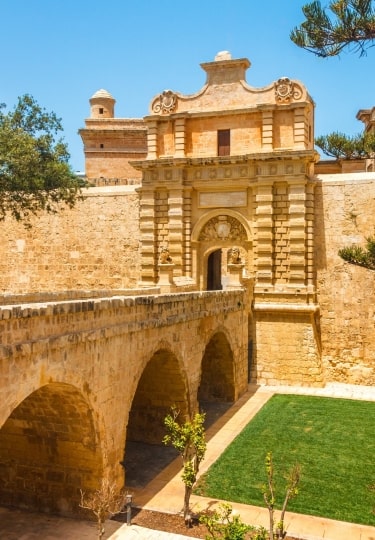Mdina (pronounced um-dee-nah), the walled city perched on a hill in central Malta, is often referred to as the “Città Silente” or Silent City by locals. This is a nod to both its storied past as the Mediterranean island’s capital from antiquity to medieval times and the tranquil nature of a visit today.
But make no mistake, this incredible citadel certainly has a lot to say for itself. It’s said that St. Paul was shipwrecked in Malta in 60AD and Mdina certainly makes the most of its apostolic connection.
But the city as it is today was founded by the Phoenicians, who colonized the island in the 8th century BC. Since then it has passed through periods of Roman, Byzantine, Crusader, French, and British rule, all of whom have left their own unique mark on Mdina, although its inherently medieval nature remains.
Over the years, Mdina has served as a place of nobility and administration, reserved for the elite and the clergy who are partly responsible for its silent past. Hidden behind its thick, honey-colored walls lies a maze of narrow, winding alleyways lined with buildings designed to cater for its formerly high-class residents.
You’ll see baroque churches, elegant palaces, and imposing monasteries. At the same time, there are relaxed cafés and intriguing museums to discover.
Attractions in Mdina, Malta
Mdina Gate
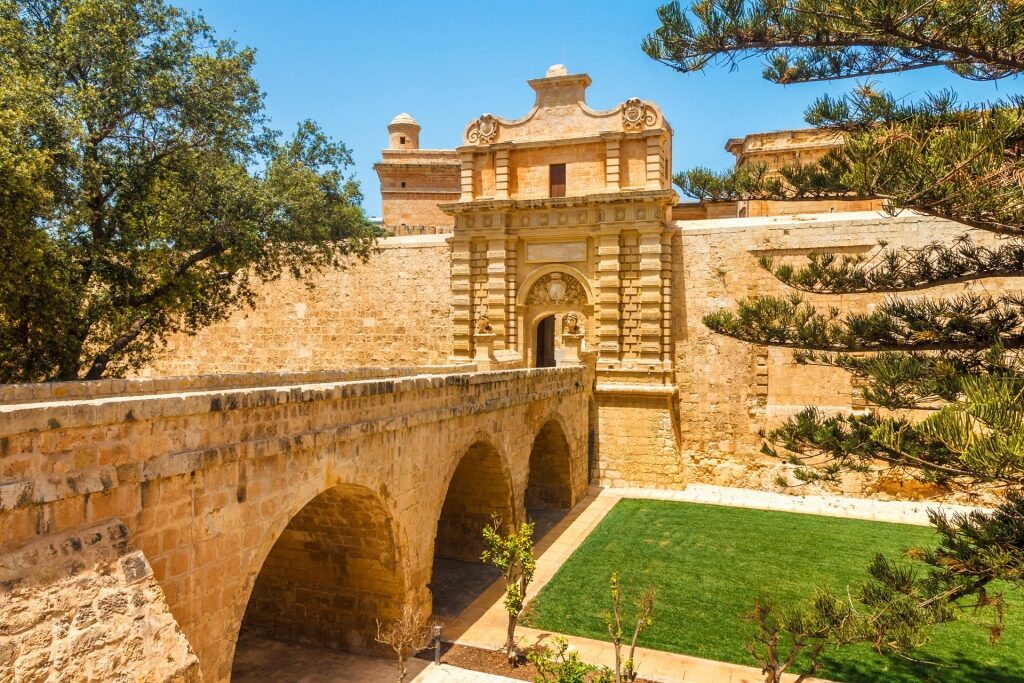
Mdina Gate
Entering the walled city through its main gate is one of the best things to do in Malta. Walk over an arched stone bridge decorated with carved lions’ to the baroque gate that bears the coats of arms of both the Grand Master António Manoel de Vilhena and the city itself.
This was not always such a grand entrance. Mdina fell somewhat into disrepair from the 15th century onwards and it was not until the early 18th century that it regained some of its former luster.
Under de Vilhena’s orders, the city was slowly restored with the gate, built by Renzo Piano to a design by Charles François de Mondion, going on to become the crowning glory of the limestone bastions.
St. Paul’s Cathedral
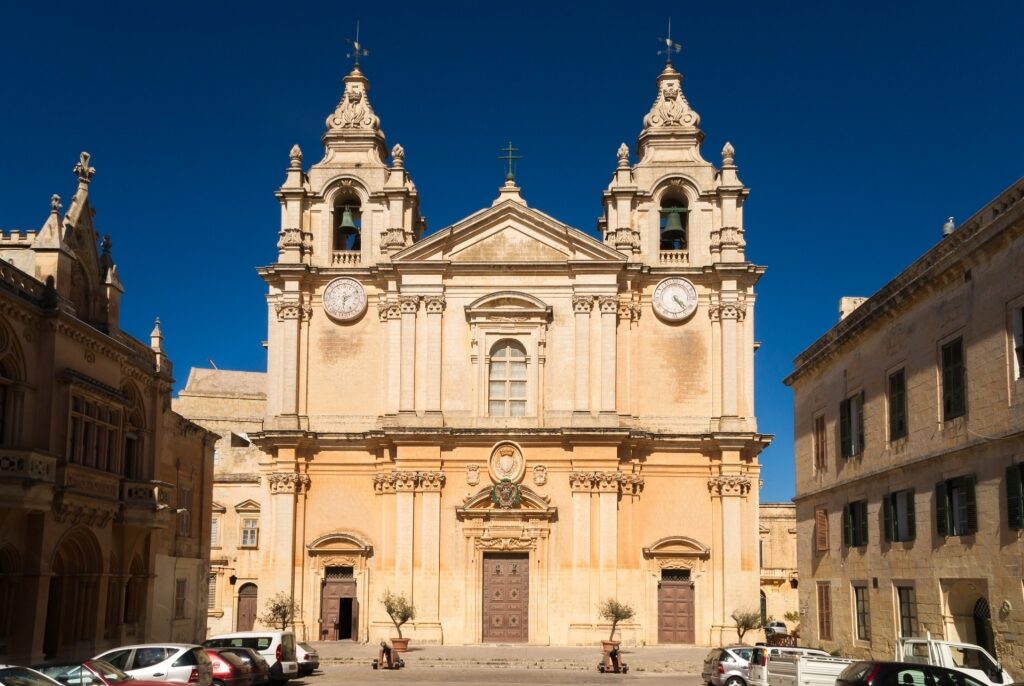
St. Paul’s Cathedral
According to legend, the Metropolitan Cathedral of Saint Paul (to give it its full name) was founded in the 12th century on the very spot where St. Paul met the then-Roman governor St. Publius following the former’s shipwreck on Malta.
Both the story and the location are open to interpretation but the beauty of the cathedral is beyond all doubt. Damaged by an earthquake in 1693, it was rebuilt in baroque style by Lorenzo Gafà between 1695 and 1705 and is considered the famed architect’s masterpiece.
Palazzo Falson Historic House Museum
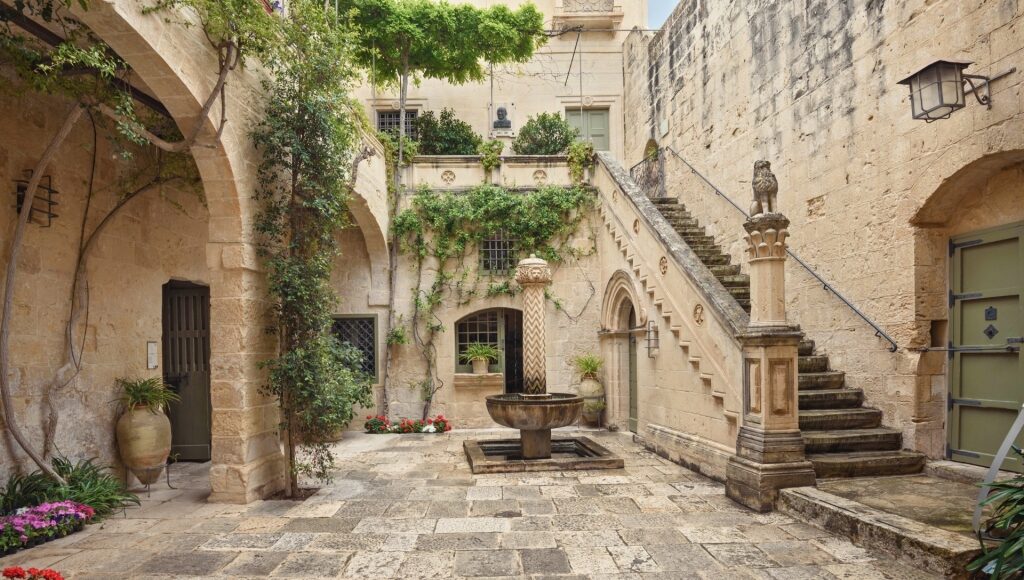
Palazzo Falson Historic House Museum
Built in the early 13th century, Palazzo Falson is one of Mdina’s best-preserved medieval buildings.
Originally built for the Falson family, it was the residence of the island’s Grand Master for a short time in 1531 before eventually being purchased by Swedish collector and philanthropist Captain Olof Frederick Gollcher OBE. He lived here with his mother and renamed it The Norman House.
On Gollcher’s death in 1962, the Palazzo was bequeathed as an art and archaeological foundation in his name and opened to the public. Visitors today get to step back in time to view fine period furniture, ornate silverware, and a remarkable library with more than 4,000 books.
Palazzo Vilhena
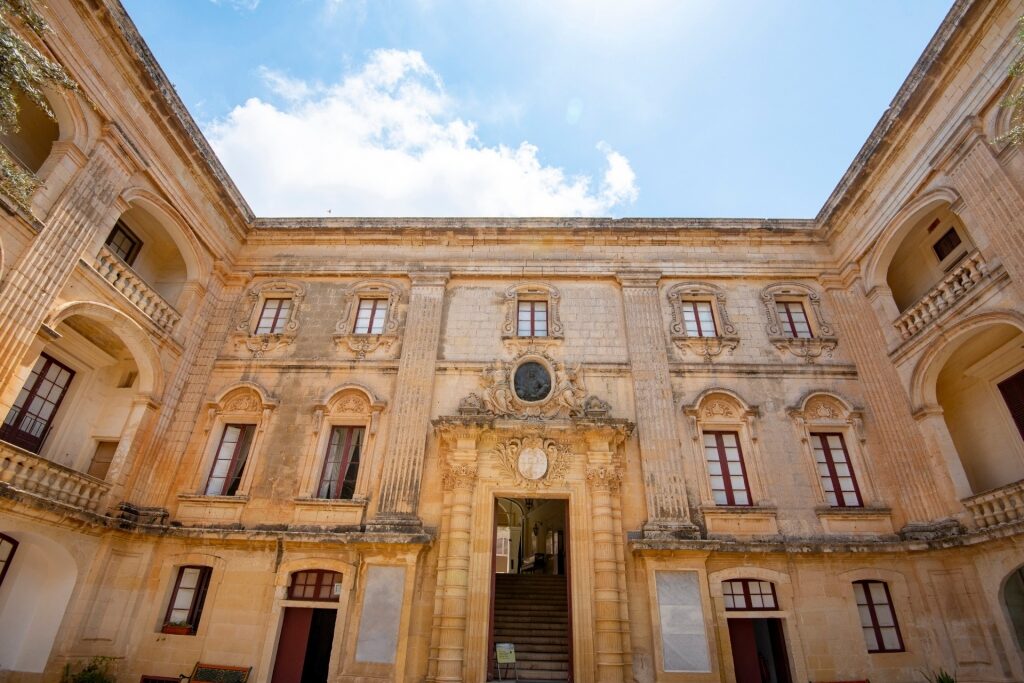
Palazzo Vilhena
In the heart of this Mediterranean city, the grandiose Palazzo Vilhena, another French baroque masterpiece, has fulfilled a number of roles throughout Malta’s history.
Once the site of local government in the form of the administrative council known as the Università, it was completely rebuilt in the 17th century as a summer palace for the Grand Master of the time António Manoel de Vilhena from whom it takes its name.
A hospital under British rule, it is now home to the National Museum of Natural History with displays from endemic species of the Maltese archipelago to detailed mineral collections.
Carmelite Priory
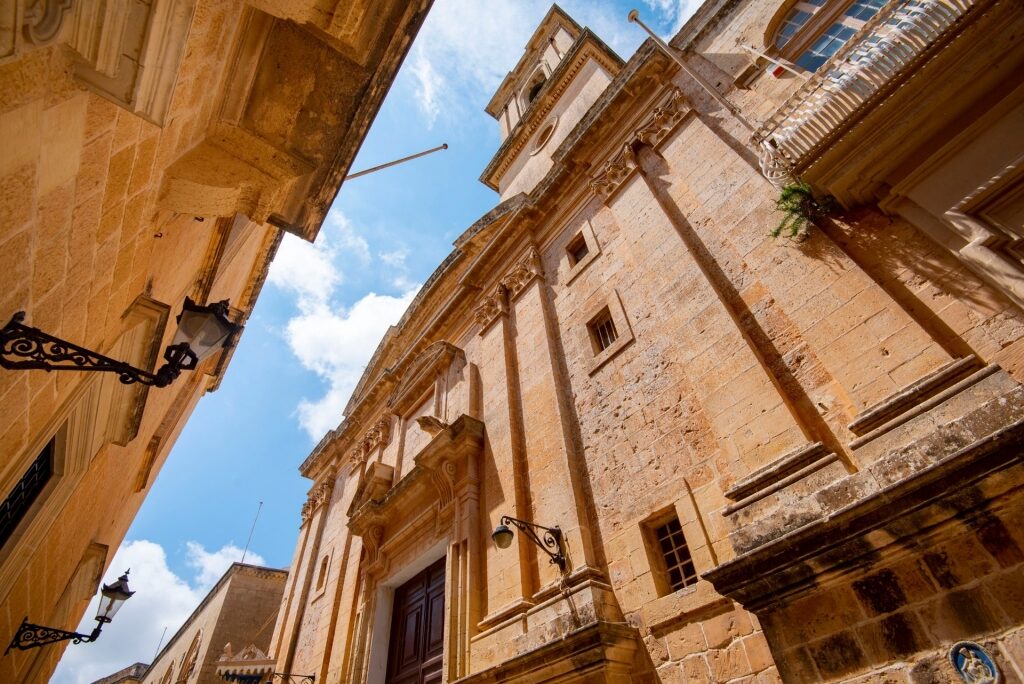
Carmelite Priory
To the north of the medieval city of Mdina, Malta, this spectacular 17th-century monastery offers a rare insight into monastic life thanks to the friars who live here having a fairly liberal view on sharing their day-to-day existence with the wider world.
The monastery’s church—the Church of the Annunciation—with its high ceilings, works of rare art, important sculptures, and impressive dome is the place to start a visit. “Back stage” offerings include tours of the monastery with a resident friar that take in the ornate refectory, kitchens, and a typical accommodation cell.
Best Things to Do in Mdina, Malta
Get Spooked at the Mdina Dungeons Museum
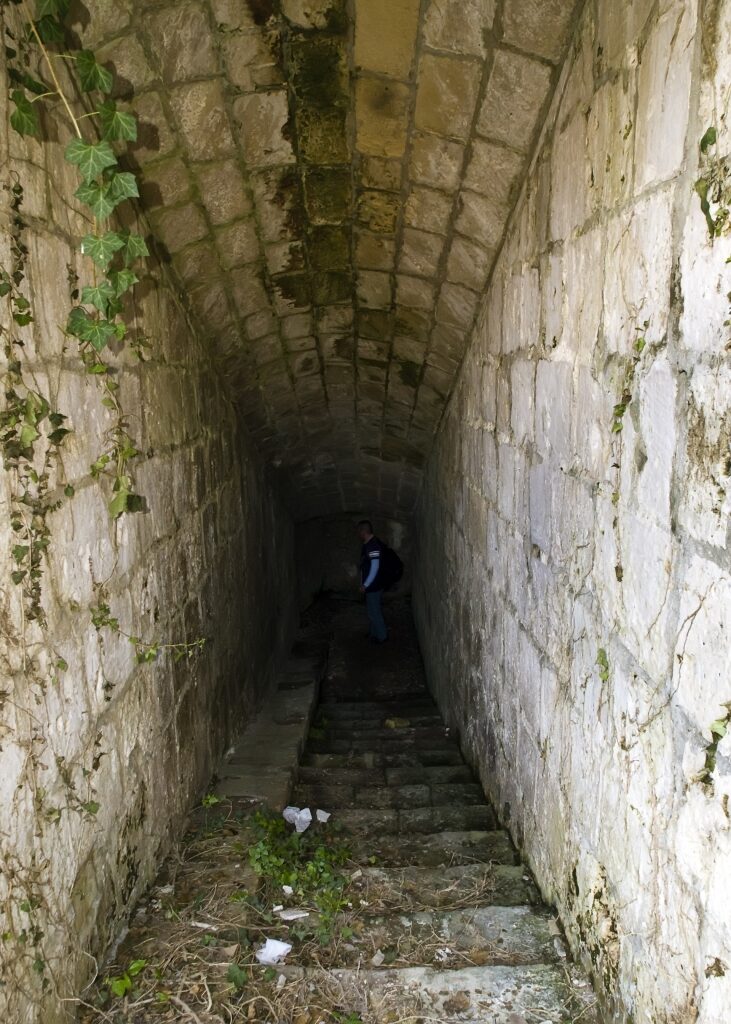
Mdina Dungeons Museum
Set just inside Mdina Gate and in the former prisons beneath St. Publius Square, this popular attraction is part museum, part ghost tour.
Visitors get to explore winding underground passageways, deep torture chambers, and prison cells, while interactive exhibits tell stories of plots, insurrections, and executions.
The stories are brought further to life by 75 life-sized figures in various period costumes, including Romans, Arabs, and Crusaders.
Learn History at the Mdina Experience
For those looking to get a potted history of Mdina and, indeed, Malta itself, look no further than the Mdina experience.
The city’s 7,000-year-old story, from the shipwreck of St. Paul to modern day, is told in a 30-minute audiovisual show with a multilingual soundtrack thanks to individual headsets. There’s also an onsite café, The Medieval Tavern.
Take Home a Piece of Mdina Glass
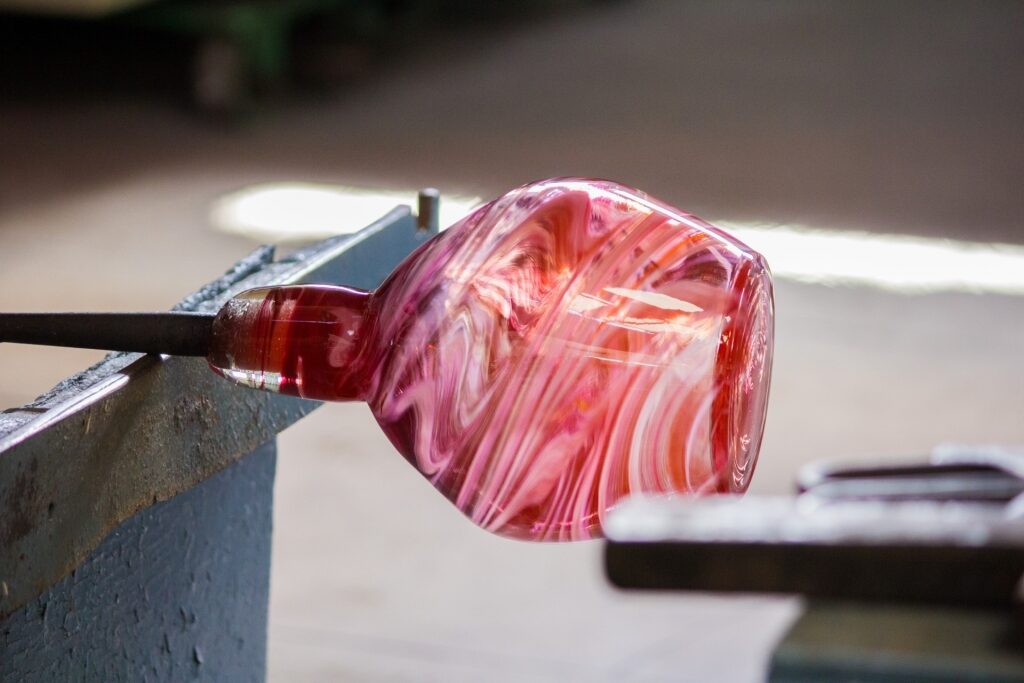
Mdina glass
One of the most unique take-home memories from a visit to Malta is glassware created by Mdina Glass, one of Europe’s leading glassware companies.
While only founded in 1968, the company soon became known for its vibrant, handcrafted pieces, many of which become collector’s items thanks to their marrying of traditional techniques with innovative designs.
There’s a flagship store in Mdina itself but those looking to get a more intimate insight into the craftsmanship of the company can take a short trip to the factory in nearby Ta’Qali. Here, there’s a chance to see glassblowers shaping molten glass into their intricate works of art.
Take Pictures By the Mdina Doors
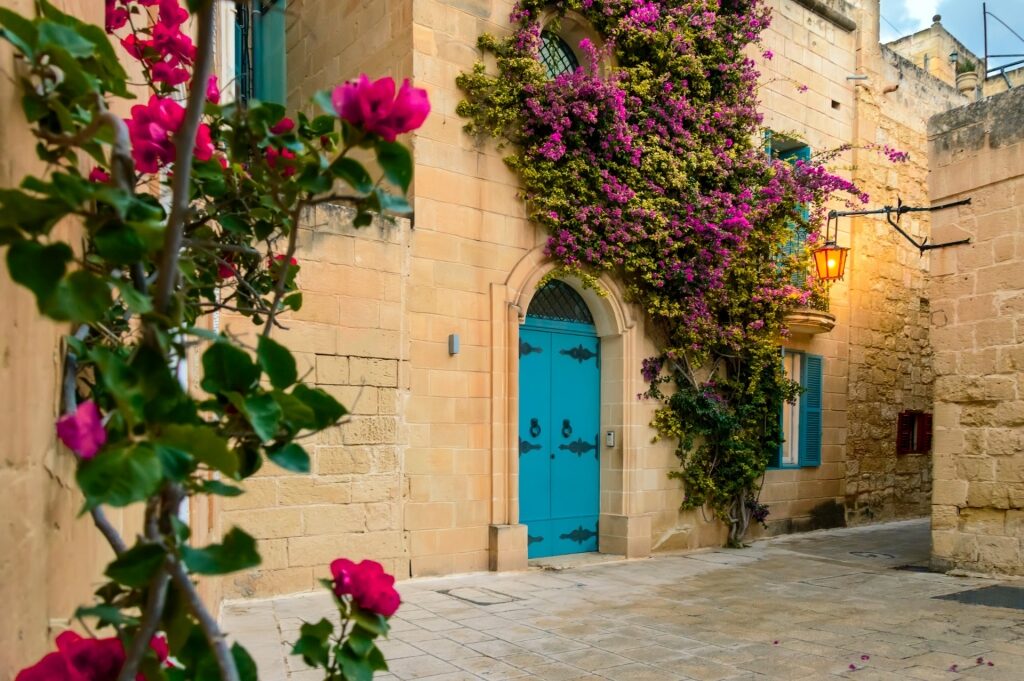
Mdina door
One could fill an entire social media account with images of the intricate doors of Mdina. Exploring the streets of the walled city is one of the most obvious things to do.
But instead of hurtling from one site to another, slowing down and taking in the various doors to the city’s homes, shops, and museums will provide the best memories of a visit.
Painted in rich hues from bold reds to deep greens, the doors stand out vibrantly against the ochre-colored soft sandstone walls.
Each has its own seemingly unique brass knocker or door handle too, all of them linked in some way to this European island and its nautical history. Variations on Maltese crosses, roaring lions, and leaping dolphins are just some of the popular options.
Stroll Through Howard Gardens to Rabat
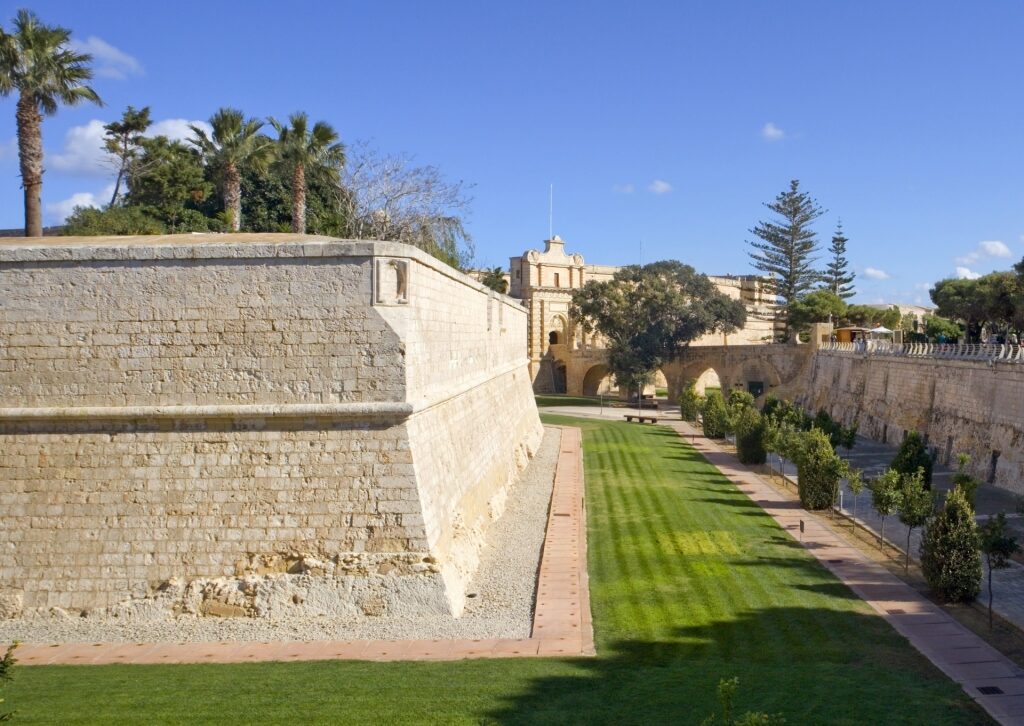
Howard Gardens
Mdina itself is so compact one can walk from one end of the city to the other in a matter of minutes. Sightseeing along the way will extend time spent here but if a schedule allows, the neighboring city of Rabat also has much to offer.
The two are linked by Howard Gardens, one of the biggest public gardens on the island, sitting just outside Mdina gate. The gardens are home to orange trees, a soccer ground, and some great spots to photograph the city walls. It’s also an ideal place to pick up a snack from one of the many kiosks that line the walkways.
Head Underground at St. Paul’s & St. Agatha’s Catacombs
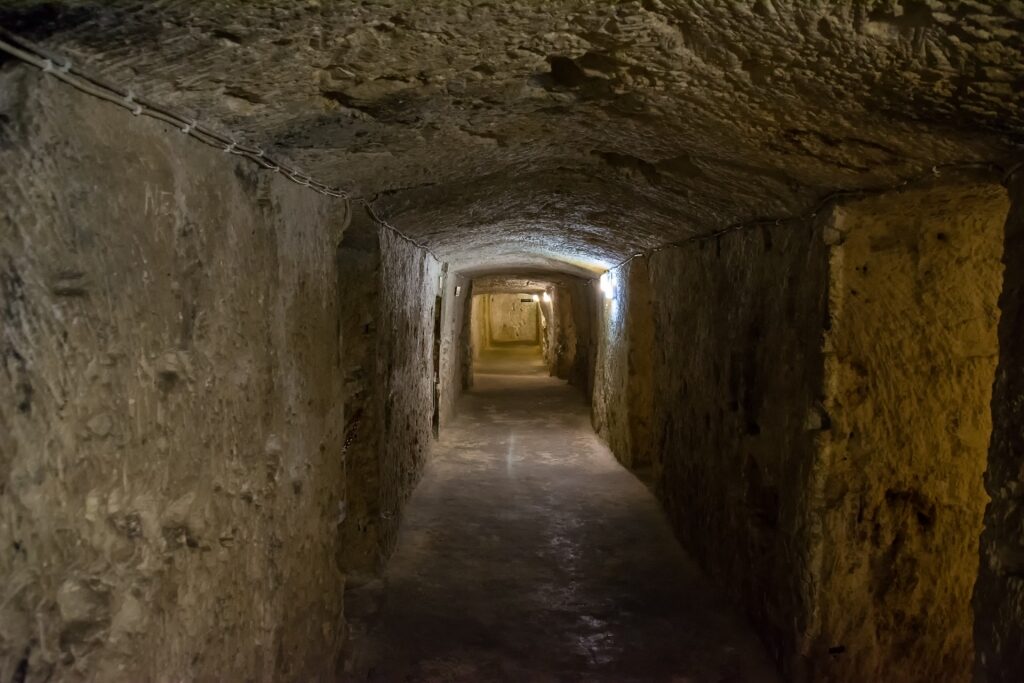
St. Paul’s Catacombs
Somewhat confusingly, there are St. Paul’s and St. Agatha’s churches in both Mdina and Rabat. While all four should be on a must-see list, the two outside Mdina’s ramparts offer the chance to take in one of Malta’s most unusual things to see: a vast complex of early Christian burial sites.
Dating from the 4th century, this network of tombs, ritual spaces, galleries, and graves provide the chance to see some of the earliest and most unique frescoes on the island.
Best Restaurants in Mdina, Malta
Fontanella Tea Garden
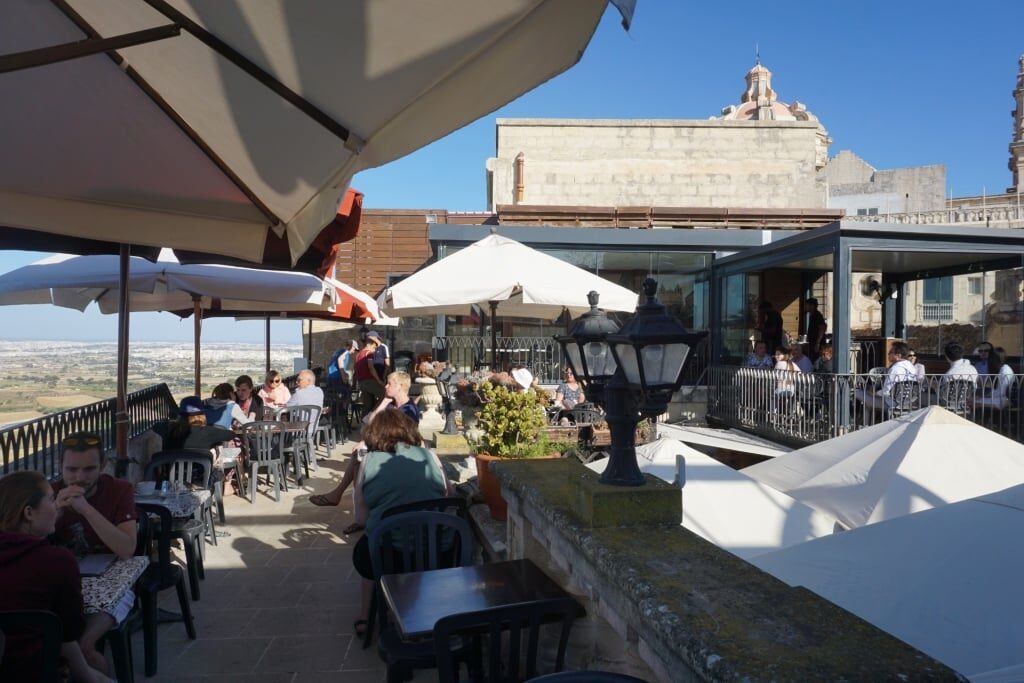
Fontanella Tea Garden Photo by Andrew Milligan sumo on Flickr, licensed under CC BY 2.0
To the north of the city and close to Palazzo Falson, Fontanella is famed for both its great food and commanding views over the island from its spot atop the city ramparts.
Specialties include Maltese treats such as pastizzi (a fried pastry filled with ricotta or curried peas), ftira (a ring-shaped bread used for sandwiches), and great cakes.
The de Mondion Restaurant
Although this restaurant is mainly open for dinner, there is a lunchtime weekend option for which it’s wise to book well in advance, such is the demand to dine at this superlative-laden Michelin-starred restaurant.
It’s located on the city ramparts and is part of the Xara Palace Hotel. Using local and sustainable ingredients, the menu features modern Mediterranean dishes with an occasional nod to traditional French cuisine.
The Medina Restaurant
Just off the main Cathedral Square and set in a Norman residence that is more than 500 years old, Medina is one of the city’s most charming places to eat.
Diners can choose from the inside dining room with its vaulted stone ceiling or an internal garden courtyard with a backdrop of stone walls. The menu is a fusion of Mediterranean and Arabic influences.
Step 15
For more delicious food that Malta is known for, Rabat’s Step 15 is an excellent choice. Set atop Saqqajja hill just outside Mdina Gate and with amazing views across the island, it offers modern twists on Mediterranean classics.
The Fork and Cork
Another excellent offering outside the city walls is this lovely venue, located in a stone-walled building offering great island views. One of the main draws here is chef patron Carl Zahra, always present in the kitchen or offering a personal touch with table greetings and wine recommendations. The “surprise” tasting menu is great value, too.
Travel Tips
Getting There
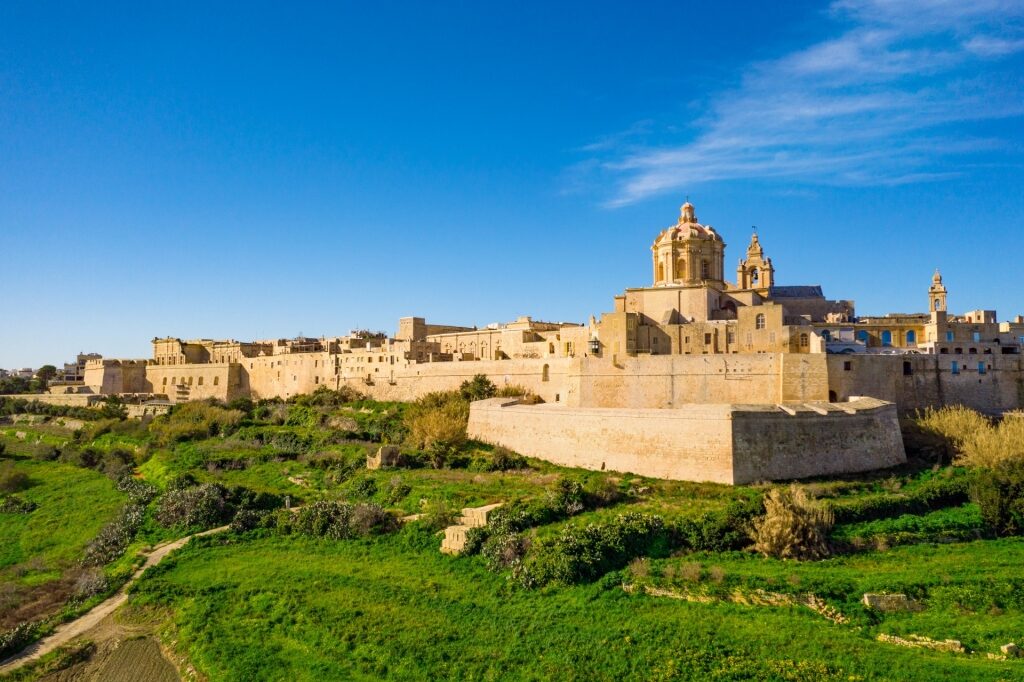
Mdina
Mdina lies around eight miles west of Malta’s capital, Valletta. By car, allow around 30 minutes to get there.
Best Time To Visit
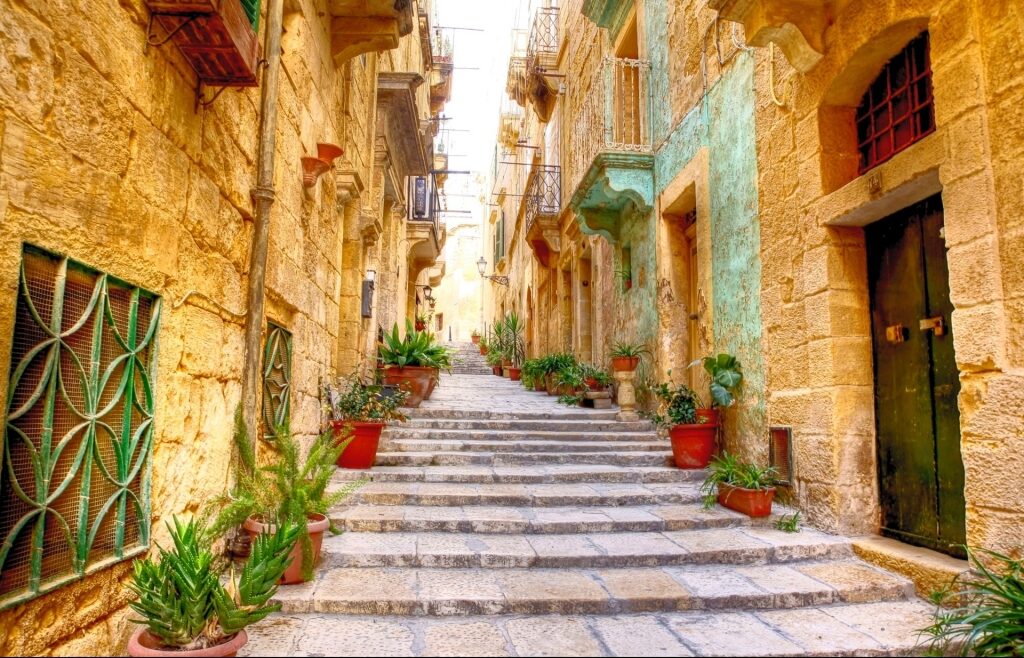
Mdina
Temperatures in Malta can average around 90°F in summer and visiting the island can be tiring in the heat during these months.
From early spring into June, temperatures remain warm through the day, cooling down into the late afternoon, pleasant enough for walking around the city without overheating. The bonus of visiting at this time means the city is less crowded than in peak summer season.
Read: Best Beaches in Malta
What To Wear
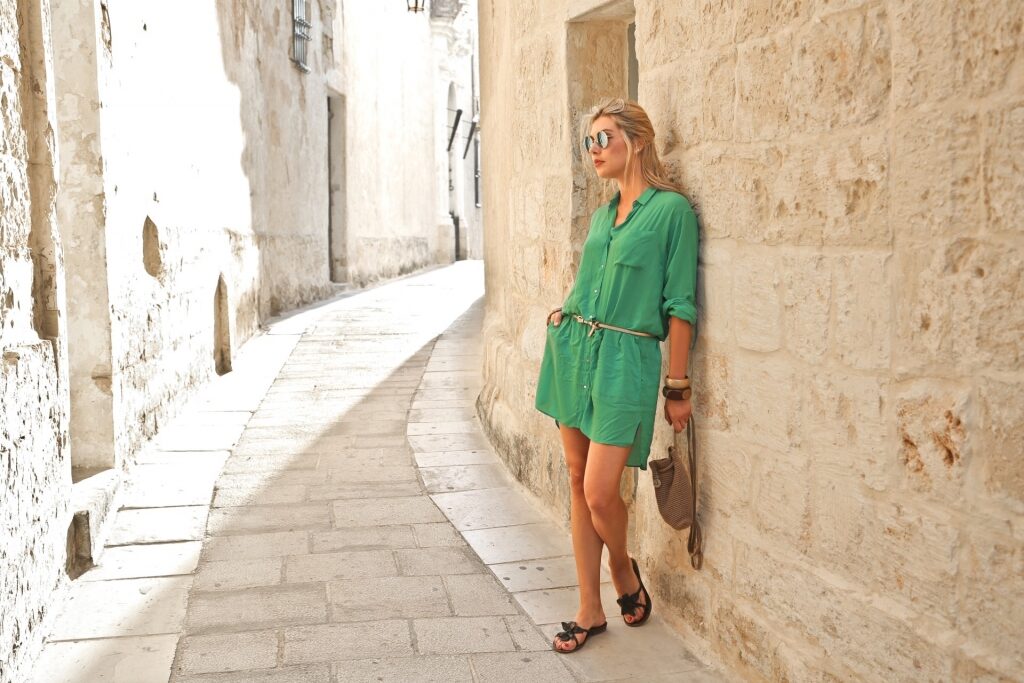
Mdina
Light clothing in the summer months is essential—think cottons and linens—but make sure to layer up. Mdina is protected by its walls but its hilltop elevation means there can be a cooling breeze.
The city is easy to navigate, given its small size, but it is also car-free, so sensible and sturdy walking shoes should be the order of the day.
For religious sites, covering shoulders and knees are recommended, as are closed-toe shoes. Removing headwear on entering shows an appropriate amount of respect.
Currency & Tipping
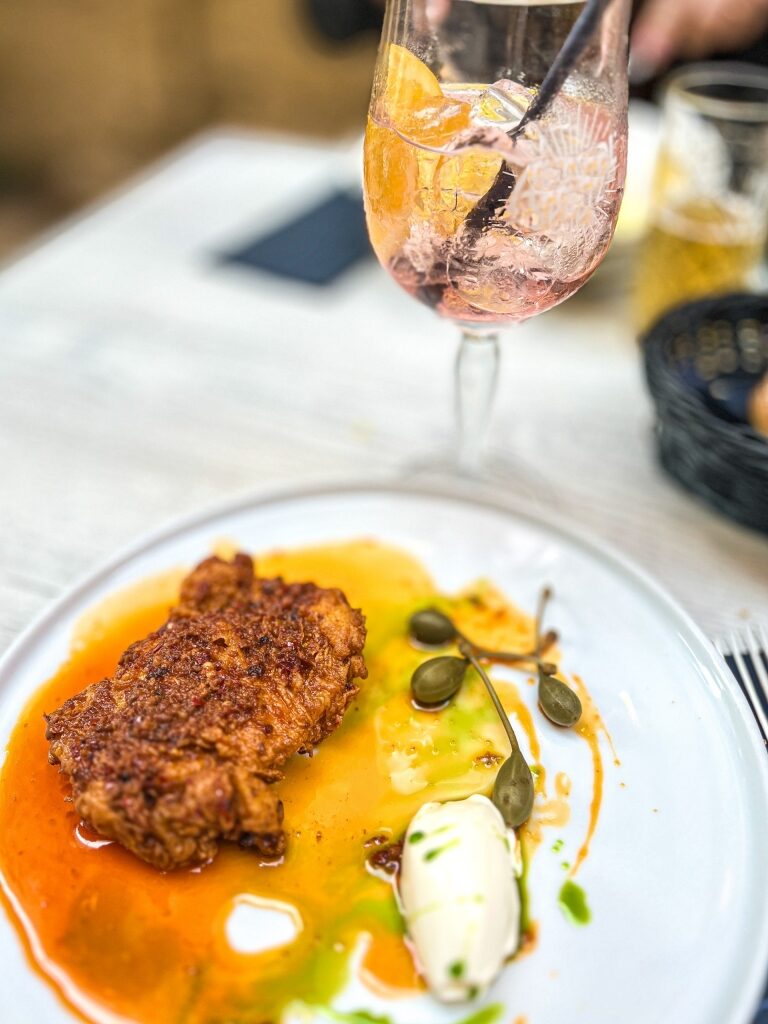
Restaurant in Mdina
The currency of Malta is the euro. Bank and credit cards are widely accepted in stores. Those wishing to pay with cash can withdraw money before visiting. Finding an ATM in Mdina itself can be a challenge, although there are several in Rabat.
Good service should be rewarded with a five to 10 percent tip, although this is not compulsory. Review the check before paying as some restaurants include a service charge. It’s worth noting that most restaurants only open for lunch between noon and 2.30pm so factor this into your schedule.
Popular Souvenirs
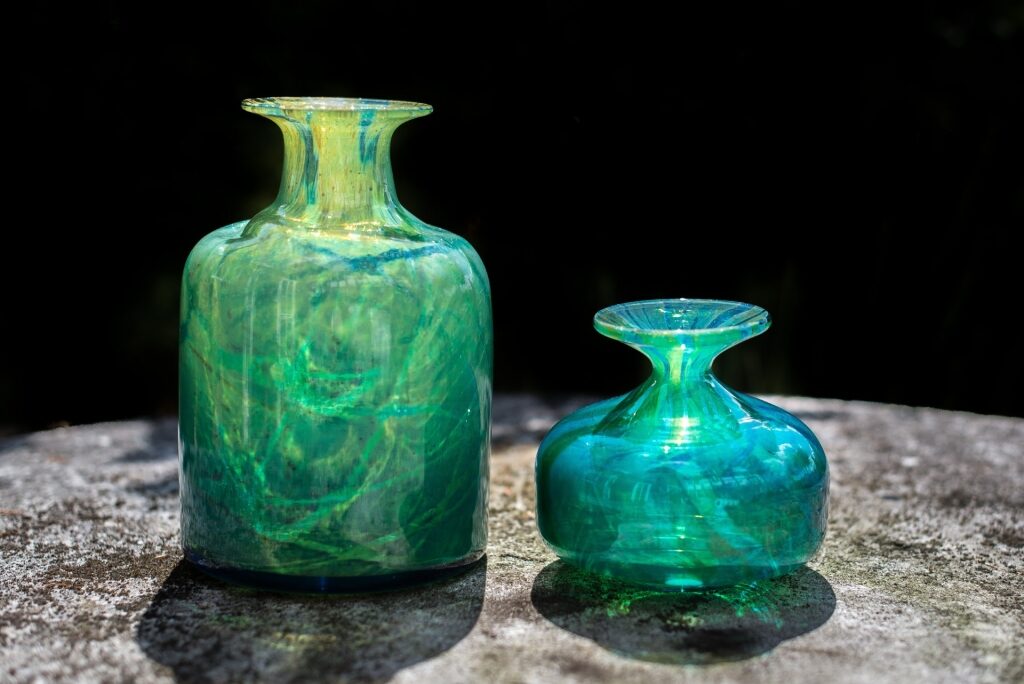
Mdina glass
As well as Mdina glass, nougat is a popular take-home from Mdina, brought to the island during the Arabic rule and made from locally sourced prickly pear.
One of the best places to buy is the Parrucan, a traditional confectioner on Triq San Kataldu Street in Rabat.
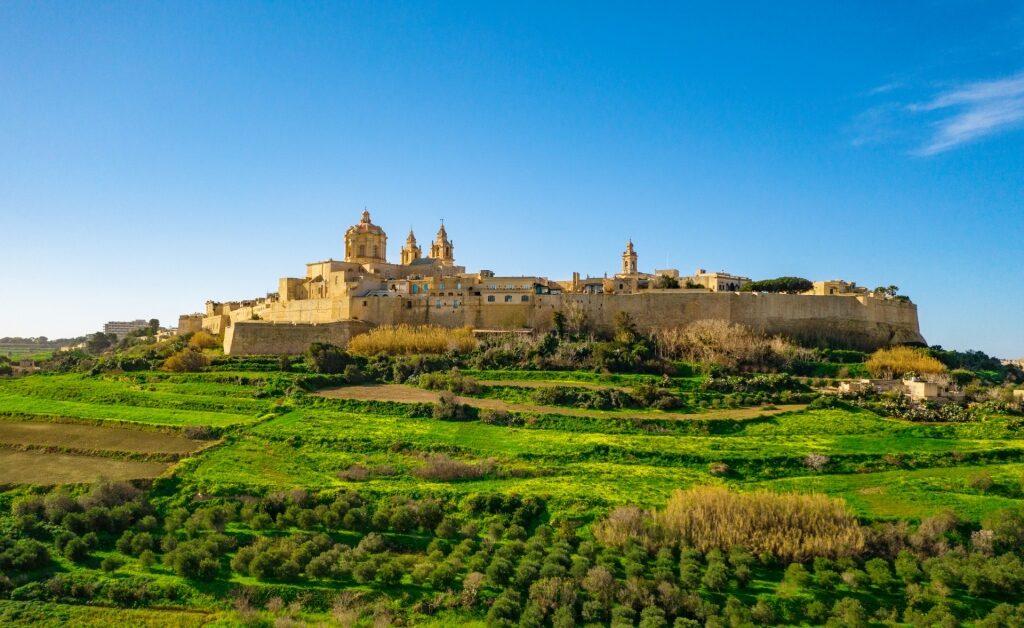
Mdina
Are you tempted to discover the delights of Mdina, Malta? Browse our Malta cruises and plan your exciting European adventure.
